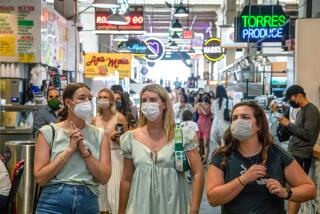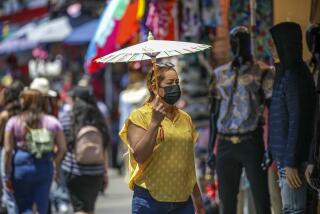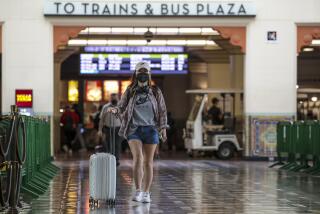Appeals court weighs outdoor dining ban â after itâs been lifted
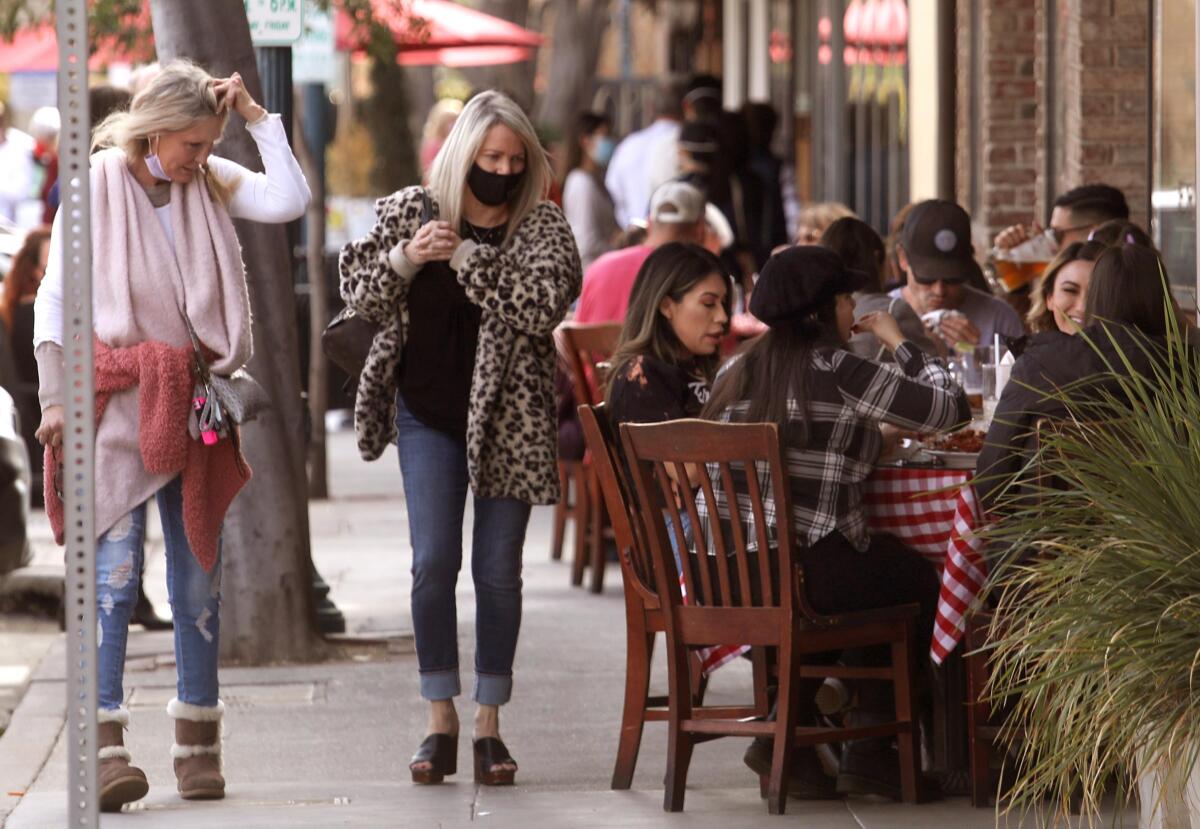
People are eating on restaurant patios in Los Angeles County again, but a challenge to a previous outdoor dining ban is still winding through the courts.
At issue is whether county officials need to provide data to back the dining restrictions they imposed to combat the COVID-19 pandemic.
A three-judge panel for the California 2nd District Court of Appeal on Wednesday appeared to be leaning toward a collective âno,â though it has three months to issue a decision.
Justice Brian Currey said he did not believe there is a statutory requirement that the county conduct an analysis to support its actions.
âItâs my view that on these facts that ⦠the lower court shouldnât have disturbed the decision of the county,â Currey said.
Both Presiding Justice Nora Manella and Justice Thomas Willhite Jr. said they agreed with Curreyâs points.
âIt doesnât strike me as requiring some leap of logic to conclude that this raises a significant risk of transmitting this fatal disease ⦠and I donât see this as a case where the county was indifferent to the consequences, which ⦠are severe,â Manella said later in the hearing.
The judgesâ comments rang as a refutation of an L.A. Superior Court judgeâs ruling on Dec. 8 mandating that the county perform a risk-benefit analysis to keep its restrictions in place.
The California Restaurant Assn. and a downtown L.A. restaurant, Engine Co. No. 28, filed separate lawsuits in late November seeking to lift a ban on outdoor dining instituted as COVID-19 cases began to surge.
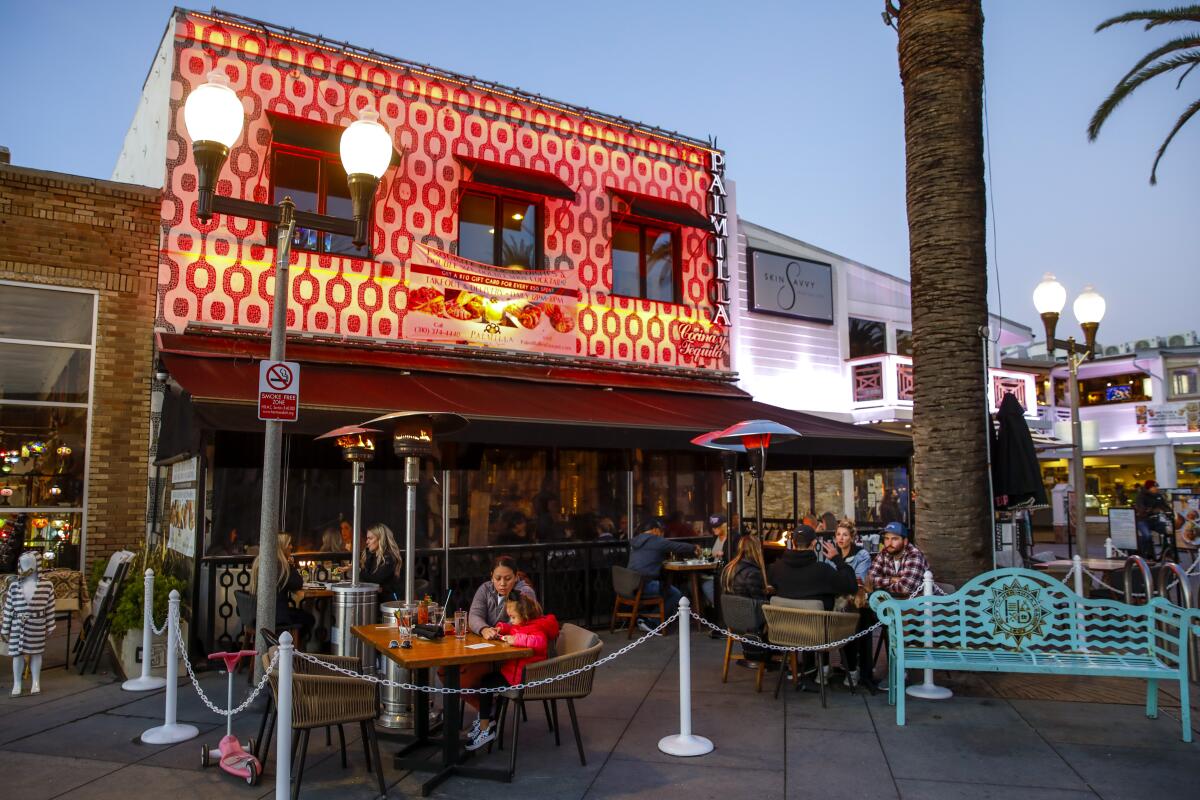
About 6,000 restaurants have gone out of business, and 150,000 employees have had their livelihoods disrupted during the pandemic, according to Dennis Ellis, an attorney for the restaurant association.
Noted criminal defense attorney Mark Geragos represented Engine Co. No. 28, which he owns.
When he issued the Dec. 8 ruling, Judge James Chalfant suggested he was not satisfied with the âgeneralizedâ arguments made by the county for a measure that caused widespread financial harm.
County officials appealed Chalfantâs ruling, and the appeals court justices paused it while litigation continued.
At the time, there was little practical effect. The state slapped its own ban on outdoor dining in early December as part of a regional stay-at-home order, superseding the county order.
After the state rescinded that order on Jan. 25, the county announced that it would again allow outdoor dining but with revised rules.
Under the new county rules, outdoor dining and wine service seating must be limited to 50% capacity, with tables positioned at least eight feet apart.
Outdoor seating is also limited to six people per table â and everyone sitting together must be from the same household, the health order mandates.
According to some experts, there is growing evidence that the ban played a role in turning around a deadly surge of the coronavirus.
In L.A. County, the stay-at-home orders and outdoor dining ban were followed by a drop in the transmission rate.
âYou did the right thing at the right time,â said Ali Mokdad, an epidemiologist at the Institute for Health Metrics and Evaluation at the University of Washington. âThe winter is working against all of us, but at least you preempted a much bigger surge of cases by doing what you did.â
Other lawsuits by California restaurant owners have taken varying paths.
A federal suit brought by a Sherman Oaks restaurant owner against Gov. Gavin Newsom over the state ban is still alive.
However, a similar lawsuit by about 50 Napa and Sonoma County restaurants and wineries was dropped once the state rescinded its regional order.
More to Read
Sign up for Essential California
The most important California stories and recommendations in your inbox every morning.
You may occasionally receive promotional content from the Los Angeles Times.

